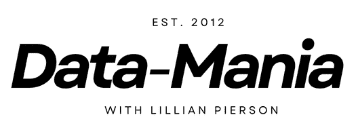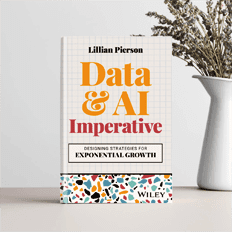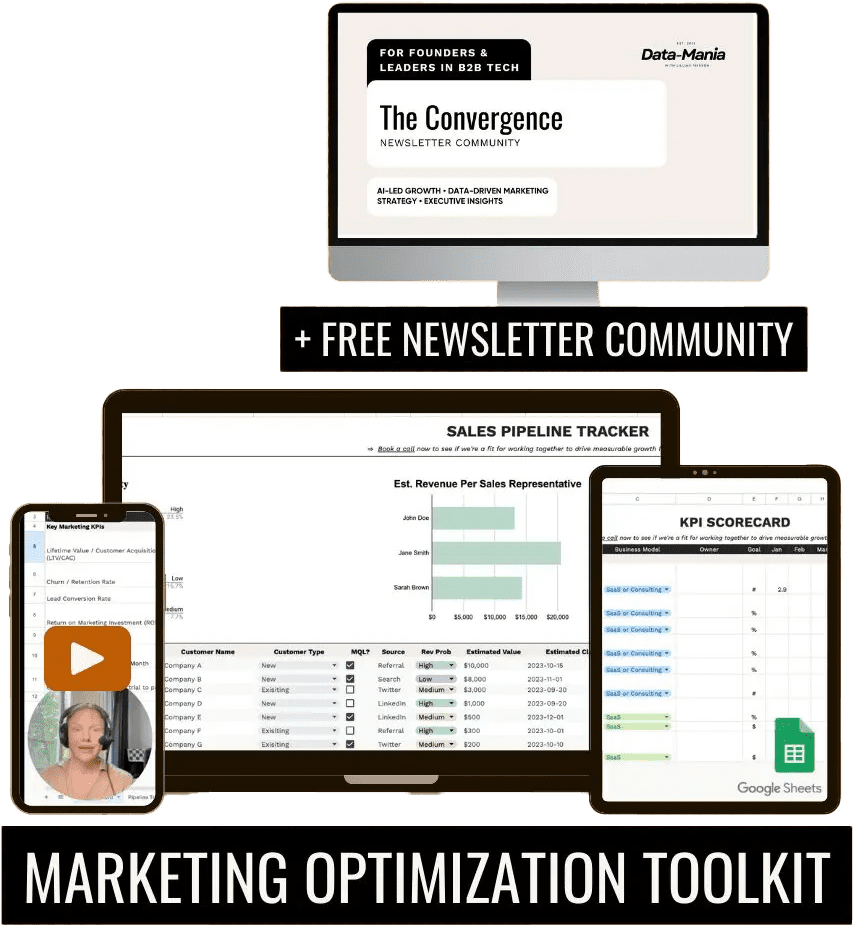A SaaS go-to-market (GTM) strategy is your action plan for delivering your product to the right audience, solving their problems, and driving growth. Here’s how to do it:
- Understand Your Market: Research your audience, create customer profiles, and segment your market for precise targeting.
- Define Your Value: Highlight what makes your product stand out and how it solves customer pain points.
- Pick the Right Channels: Choose sales models (self-service, inside sales, enterprise) and marketing channels (content, paid ads, partnerships) that align with your audience.
- Get Pricing Right: Use subscription, freemium, or usage-based models that reflect the value your product delivers.
- Track and Improve: Monitor key metrics like CAC, LTV, and churn, and adjust your strategy regularly for better results.
This framework ensures your product gets noticed, solves real problems, and generates consistent growth.
Want the details? Let’s break it down step by step.
How to Create a B2B Go To Market Strategy
Step 1: Market Analysis and Customer Research
Understanding your market and customers is the backbone of any successful SaaS go-to-market strategy. This step involves gathering key data about your audience and market landscape to guide your decisions.
Market Research Methods
Market research helps you get a clear picture of your market. Here’s a breakdown of common approaches:
| Research Method | Primary Use | Key Benefits |
|---|---|---|
| Customer Surveys | Gather direct feedback | Clear insights into user preferences |
| In-depth Interviews | Understand pain points | Detailed understanding of customer needs |
| Industry Reports | Track market trends | Offers a broader view of the market |
| Competitor Analysis | Identify market gaps | Helps with strategic positioning |
After collecting this data, the next step is turning it into actionable customer profiles.
Building Customer Profiles
Creating detailed buyer personas can boost your chances of exceeding revenue and lead targets by 71% [4]. These profiles should include essential details like decision-making processes, pain points, budget considerations, and technology preferences.
"A go-to-market strategy for SaaS companies outlines how to launch a new product or feature and attract customers. This comprehensive action strategy helps set you up for success." – Amplitude [1]
Armed with these profiles, you can segment your market and focus on specific, high-potential groups.
Market Segmentation Steps
Effective segmentation involves factors like:
- Company Demographics: Size, industry, and location
- User Behavior: How users interact with your product, including feature preferences
- Purchase Drivers: Budget limits and decision-making criteria
- Pain Points: Challenges unique to each segment
For example, Slack targeted tech startups to address email overload, demonstrating the power of precise segmentation. Segmented email campaigns also see a 14.32% higher open rate compared to non-segmented ones [4].
Keep your research up-to-date as market conditions shift [2][3]. Regular updates ensure your strategy stays relevant and focused on the right audience, driving better results across your sales and marketing efforts.
Step 2: Value Proposition Development
After completing your market research, the next step is creating a value proposition that connects with your audience and makes your product stand out in a crowded market.
Product Differentiators
Highlight what sets your product apart. This includes both technical features and customer-focused benefits:
| Differentiator Type | Examples |
|---|---|
| Technical Features | Native ERP integration for smooth operations |
| Service Quality | 24/7 support with guaranteed response times |
| Business Model | Flexible contracts and pricing based on value |
| Performance | Speed, reliability, and uptime assurances |
Customer Problem Mapping
"Effective positioning is shaped by how customers perceive your product, not just how you describe it."
Pinpoint customer challenges and tie them directly to your product’s solutions:
- Identify the main issues your customers face and offer targeted solutions.
- Show how your product features address these issues with clear, measurable benefits.
- Use metrics like time saved or costs reduced to illustrate value.
For instance, Sana Commerce tackled inventory accuracy issues by integrating ERP systems, while Paddle simplified payment processing with a compliance-ready solution [1].
Market Position Statement
Develop a concise statement that connects your audience, their problem, and your solution. For example, Dropbox’s “Your stuff, anywhere” emphasizes accessibility, and HubSpot’s “Free CRM Software That Grows With Your Business” highlights scalability [3][4].
Regularly revisit and refine your value proposition to stay aligned with market changes. This keeps your messaging relevant as the needs of your audience shift [2].
Once your value proposition is solid, the next step is identifying the best channels to communicate it effectively to your target audience.
Step 3: Sales and Marketing Channel Selection
Once you’ve defined your value proposition, the next step is choosing the right mix of sales and marketing channels to effectively connect with your target audience.
SaaS Sales Model Options
Your sales model should match the complexity of your product and the needs of your market. Here’s a quick comparison of common approaches:
| Sales Model | Best For | Typical Price Point | Customer Interaction |
|---|---|---|---|
| Self-service | Simple, high-volume products | $10-100/month | Automated, minimal interaction |
| Inside sales | Moderately complex solutions | $100-1000/month | Regular engagement with sales reps |
| Enterprise | Complex, high-value solutions | $1000+/month | Dedicated account teams, high-touch |
These price points are general guidelines and can shift based on your market or product specifics.
After selecting a sales model, the next step is to determine which marketing channels will best complement your approach.
Marketing Channel Analysis
Your customer segmentation insights should steer your marketing channel choices. This ensures your efforts align with your audience’s preferences.
Inbound Marketing: Content marketing and SEO are cornerstones for many SaaS companies. For example, HubSpot uses educational content to draw in qualified leads and establish authority in the market.
Outbound Marketing: Focus on channels where your audience is most active. Keep a close eye on customer acquisition costs (CAC) and conversion rates to ensure you’re getting the most from your budget. Tools for data analytics are critical for tracking performance and fine-tuning your strategy.
Channel Mix Planning
Building the right channel mix means balancing benefits with the resources you have. Here’s a breakdown:
| Channel Type | Primary Benefits | Resource Requirements |
|---|---|---|
| Content Marketing | Builds authority, long-term SEO benefits | High effort for content creation |
| Paid Advertising | Quick visibility, precise audience targeting | Requires a substantial budget |
| Partner Programs | Expands reach, adds credibility | Time-intensive partnership management |
| Social Media | Boosts brand awareness, fosters community | Requires consistent engagement |
A great example is Slack, which combined strategic partnerships with its freemium model to drive widespread adoption [1].
Tips for Success:
- Begin with 2-3 key channels that align with your audience’s habits, and measure success through ROI and conversion rates.
- Keep your messaging consistent across platforms, but tailor formats to each channel.
- Regularly analyze performance metrics and adjust your channel mix as needed.
Once your channel strategy is in place, the next step is ensuring your pricing aligns with your value proposition and audience expectations.
sbb-itb-e8c8399
Step 4: Price Structure Planning
Getting your SaaS pricing right is key to driving growth and standing out in the market. Pricing plays a major role in how you attract customers and keep them around for the long haul.
SaaS Pricing Models
Your pricing model should match what your target audience wants and how they prefer to buy:
| Pricing Model | Best For | Key Benefits | Example |
|---|---|---|---|
| Subscription | Products with consistent use | Steady, recurring revenue | HubSpot’s tiered plans |
| Freemium | Large potential user base | Quick user adoption | Slack’s free, limited-feature tier |
| Usage-based | Products with varying usage levels | Transparent value exchange | AWS’s pay-as-you-go system |
Setting Prices Based on Value
Value-based pricing focuses on what your customers think your product is worth, not just your internal costs. Research from OpenView suggests that even a small 1% price increase can lead to an 11% jump in profit margins [5].
How to Assess Customer Value
- Identify the problem your product solves.
- Calculate the financial benefits your solution provides.
- Price your product at 20-50% of the value your customer gains.
For instance, if your product saves a customer $100 in monthly costs, pricing it between $20-50 per month makes it an appealing, cost-effective solution.
Testing Your Pricing Strategy
A/B testing and tier testing are great ways to find the pricing sweet spot while experimenting with feature bundles. HubSpot reports that 62% of customers are willing to pay more for products that deliver extra value [5].
Testing Methods and Metrics
| Method | How It Works | What to Measure |
|---|---|---|
| A/B Testing | Test different price points with customer groups | Conversion rates, Revenue per user |
| Tier Testing | Experiment with feature bundles and plans | Upgrade rates, Plan distribution |
| Regional Pricing | Adjust prices for local markets | Market share, Competitor pricing impact |
"Pricing is not just about the number; it’s about the value proposition." – Jason M. Lemkin, Co-Founder and CEO of EchoSign [5]
Tips for Effective Price Testing
- Test one variable at a time to avoid confusion.
- Keep an eye on customer feedback and satisfaction.
- Track how pricing impacts acquisition costs and customer lifetime value.
Using tools like Pricefx can simplify price adjustments by analyzing customer behavior [5]. After fine-tuning your pricing, keep an eye on performance metrics and make adjustments as needed.
Step 5: Performance Tracking and Updates
Tracking and measuring performance is essential for refining your SaaS go-to-market strategy. Here’s how to establish a solid system for monitoring and improving results.
Key Metrics to Monitor
Focus on metrics that drive business growth and highlight customer satisfaction:
| Metric Category | Key Metrics | Target Range |
|---|---|---|
| Customer Economics | CAC, LTV, MRR | LTV:CAC > 3:1 |
| User Engagement | Active Users, Feature Adoption | Over 40% Feature Usage |
| Customer Health | NPS, Churn Rate | Under 5% Monthly Churn |
Pro Tip: Keeping an LTV:CAC ratio above 3:1 helps ensure your business generates enough value per customer to cover acquisition costs and support long-term growth.
Once you’ve pinpointed the metrics that matter most, the next step is setting up tools to track and analyze them efficiently.
Tools for Measurement
A reliable tech stack is your best friend when it comes to tracking SaaS performance. Here are some key tools to consider:
| Tool Type | Solution | Function |
|---|---|---|
| Analytics | Mixpanel | Tracks user behavior |
| CRM | Salesforce | Manages the sales pipeline |
| Customer Success | Gainsight | Monitors customer health scores |
| Financial Metrics | ProfitWell | Tracks MRR and churn |
These tools provide the insights you need to make data-driven decisions and fine-tune your strategy.
Regular Strategy Updates
Frequent reviews of your strategy are critical. Use performance data to identify areas for improvement, prioritize changes, and test updates with smaller customer groups before scaling successful adjustments. Early-stage SaaS companies often review their strategies every 6-8 weeks, while more established businesses may prefer quarterly reviews.
Steps for Reviewing Your Strategy:
- Compare current performance metrics against your KPIs and market trends.
- Test changes systematically, tweaking one variable at a time to measure its specific impact.
As part of your review, revisit your value proposition and channel mix to ensure they align with your updated goals. Tools like Userpilot can help you track how these changes affect user engagement and conversion rates. This ongoing process keeps your strategy aligned with both customer needs and market dynamics.
Conclusion: Implementation Guide
Main Points Review
Creating a winning SaaS go-to-market plan involves blending market research, a clear value proposition, a well-chosen channel mix, thoughtful pricing, and ongoing performance tracking. Companies with clearly defined GTM strategies are 30% more likely to meet their market goals [4]. These elements work together to support growth and attract customers effectively.
Once these key elements are outlined, the focus shifts to putting the strategy into action with clear, practical steps.
Action Steps
-
Launch Preparation
- Dive into market research and analyze competitors thoroughly.
- Align sales and marketing teams to ensure consistent messaging.
- Define success metrics and benchmarks upfront.
-
Strategic Implementation
- Set up systems to track core metrics.
- Regularly monitor customer acquisition cost (CAC) – the industry average is $702 [4].
- Use analytics tools to measure performance and identify trends.
- Optimization Process
A structured timeline helps maintain focus on refining your GTM strategy over time:
| Timeline | Review Focus | Action Items |
|---|---|---|
| Weekly | Key Metrics | Check CAC, LTV, and MRR |
| Monthly | Channel Performance | Adjust the marketing mix |
| Quarterly | Strategy Alignment | Refresh the value proposition |
A GTM strategy isn’t a one-and-done effort – it requires regular updates based on data and customer feedback. Companies like Performio highlight the importance of demand generation and teamwork across departments [1].
"A data-driven go-to-market strategy can help mitigate potential risks when looking to grow your business." [1]
The key to success lies in staying aligned with customer needs, adapting as necessary, and continuously tracking progress to meet your goals.
FAQs
What is a B2B go-to-market strategy?
B2B go-to-market (GTM) strategies are tailored to meet the needs and decision-making processes of businesses, which are quite different from those of individual consumers in B2C markets.
A strong B2B GTM strategy focuses on a few key elements: analyzing the market to find opportunities, crafting a clear value proposition to guide messaging, choosing the right channels for growth, and tracking performance to improve outcomes.
For SaaS companies, a successful B2B GTM strategy often involves:
- Regular Strategy Reviews: Conducting quarterly evaluations of market trends and customer feedback.
- Channel Optimization: Balancing direct and indirect distribution methods for better reach.
- Value Communication: Clearly explaining the business benefits and return on investment (ROI).
- Performance Measurement: Monitoring metrics like customer acquisition cost (CAC), customer lifetime value (CLV), and retention rates.
Example: Slack’s early success is a great case study. They used a focused freemium model and targeted content marketing to carve out a strong position in the B2B space [1].
A well-thought-out B2B GTM strategy reduces launch risks and ensures that marketing, sales, and product teams work in sync. The key to success lies in detailed research, understanding customer needs, and standing out against competitors [1][4].
Related Blog Posts
- Product-Led Growth vs Sales-Led Growth: Which Fits Your SaaS?
- Marketing Tech Stack Checklist for Early-Stage Startups
- How to Build a SaaS Marketing Strategy from Scratch
- 10 A/B Testing Tips for B2B Campaigns





